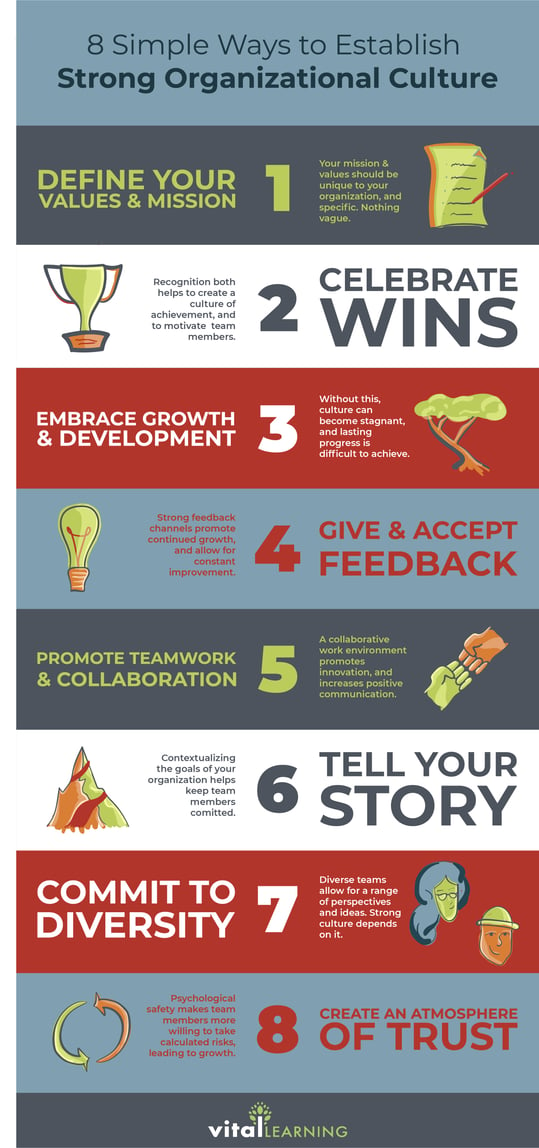Establishing strong workplace culture is crucial for business leaders who want to recruit the best talent, retain their strongest employees, and see high levels of engagement from team members. Workplace culture improvement is a process that shouldn't be rushed, so use this list as a long-term guide.

1: Define your values and mission
Your mission & values should be unique to your organization, and specific. Establishing strong organizational culture requires team members to rally around a shared group of ideals, and to commit to a concrete set of goals and objectives.
2: Celebrate wins
Recognition both helps to create a culture of achievement, and to motivate team members. Showing appreciation for those going above-and-beyond in their responsibilities helps to make team members feel valued, and that they're contributing to the larger goals of the organization.
3: Embrace growth & development
Without this, culture can become stagnant. Treating personal and professional growth as a process and encouraging team members to seek out new learning opportunities can help achieve lasting progress towards your mission.
4: Give & Accept Feedback
A workplace culture rich with feedback between teams is far more likely to see continued growth. Creating feedback channels where team members can constantly improve in their role is important to ensure that you have a culture of development.
5: Promote teamwork & collaboration
A collaborative work environment promotes innovation, and increases positive communication. When team members are able to seek out different perspectives, they tend to make more objective and nuanced decisions. A culture of teamwork also helps to reduce conflict between employees, and adds a sense of togetherness to an organization.
6: Tell your story
Contextualizing the goals of your organization helps keep team members committed to your shared values and mission. Strong organizational culture depends upon how you tell your story, and whether or not team members can see the "bigger picture" of the organization as it relates to the the world, the industry, and the lives of the employees.
7: Commit to diversity
Diverse teams allow for a wider range of perspectives and ideas. Having a one-dimensional workforce makes it difficult to get an "outsider's look" at problems and their possible solutions. By committing to diversity and inclusion, business leaders can improve organizational culture by widening the scope of issues that the organization is apt to address.
8: Create an atmosphere of trust
Psychological safety makes teams more likely (and willing) to make calculated risks. By cultivating a culture of trust, organizations can increase innovative ideas and outcomes, and achieve a higher level of communication effectiveness.

